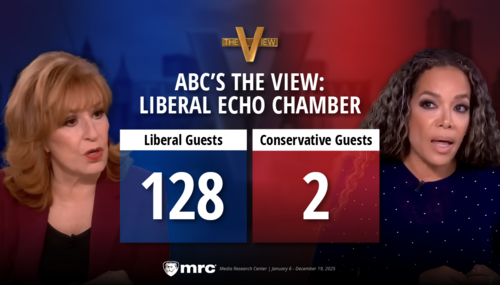On the first Sunday of Advent, The Washington Post devoted two stories on the front of its Arts section to revisiting last year's controversy over a gay-left exhibit at the National Portrait Gallery that starred a video with ants crawling on the crucifix of Jesus. The "Hide/Seek" propaganda assembly is now on display at the Brooklyn Museum, and Post critic Philip Kennicott thinks the "right-wing Catholic ire" is already so yesterday: "the pace of cultural change on gay and lesbian issues is so rapid that even a year may have transformed the dynamics."
Whereas last year, museum bureaucrat Wayne Clough removing the ants-on-Jesus video was "a dark day for the Smithsonian, a successful, coordinated attack on free speech," Kennicott is still championing the gay-left curators and their vision of what they now call "the inherent queerness of America." They can't stand the idea that conservatives get to have any say at all.
Noting that the Brooklyn Museum didn't "capitulate" when Brooklyn Catholic Bishop Nicholas DiMarzio asked in a letter for the Jesus-bashing video to be removed, Kennicott sees the conservatives as a spent force:
But the hostility generated by the Catholic League, which so affrighted Clough a year ago, now looks like a rear-guard action.
“They had hopes of starting a culture war like they did in 1987,” Katz says. “But it didn’t work out that way. They got repeatedly attacked for being narrow-minded bigots and now they’re just playing to their base.”
So they're bashing Whittaker Chambers for payback:
And in at least one case, a substitute work may be a lesser piece in artistic terms, but has particular power given the contretemps that plagued the exhibition a year ago. Unable to continue borrowing Jess’s “The Mouse’s Tale,” a large, cheeky and confrontational collage made of male pin-ups from the 1950s, the curators have substituted another Jess work, “Lord Pervert,” which mocks Whittaker Chambers, star witness in the House Un-American Activities Committee hearings who not only rejected communism, but also his own homosexuality after taking up Christianity.
“It wasn’t an unself-conscious change, given all that happened,” says Jonathan Katz, who organized the original show with Ward.
Katz sounds freer, and happier, than he did a year ago. He still praises the National Portrait Gallery for its courage in mounting the exhibition, but he’s not pulling punches when it comes to the groups that first mounted the protests.
“I’m [ticked] off,” he says. “I’ve seen 10 seconds of film overtake 125 years of carefully researched history. I’m tired of them calling the shots and determining the parameters of the conversation.”
According to Katz, the controversy was great for the show’s popularity, but it overshadowed a subtle argument about the role of sexual difference in American art. “Hide/Seek” wasn’t meant to be a “gay” show, but rather a sustained look at how sexual difference of many types were hiding in plain sight throughout the history of American art.
“It’s about the refusal to specify difference,” he says, which underscores a larger theme: the manifold ways that all kinds of people outside the majority create alternative identities, and through those identities influence the course of the mainstream.
“I always saw it through the rubric ‘queer,’ ” he says. Queer, which was definitely not a term used much during the Portrait Gallery iteration of the show, is a broader, more inclusive term, which stresses difference over assimilation, self-fashioned and transgressive identities instead of the more mainstream ideas of assimilation and inclusion. In some cases, queer doesn’t necessarily refer to homosexuality at all, but can denote sexual difference of supposedly “straight” people.'
It’s a term that has greater currency in New York and academia than it does in Washington and the political world. Now that the show is in New York where isn’t being overwhelmed by politics, Katz can connect it to a larger cultural theme: “It’s about the inherent queerness of America,” he says.
The Post has no room for conservative critics anywhere in this article, or in Jacqueline Trescott's piece on how museums now consider controversy before mounting an exhibit. They didn't remind anyone that these curators compared conservatives to an "American Taliban" and the Nazis in Germany in the 1930s.
Kennicott insists that this is the challenge for the art world, that it much channel the queerness and mainstream it:
The idea that there is an “inherent queerness of America” may be one of the biggest challenges and opportunities mainstream cultural organizations face today. There is a distinction between a state of social affairs in which the majority thinks it is wrong to be mean to a particular minority, and a more advanced state when it doesn’t distinguish between us and them, and hence finds bigotry a form of violence against the entire community. The challenge for art museums isn’t just to mount an occasional token show about gay issues or decry censorship. Rather, it’s to include an everyday understanding of gay — or queer — issues in its regular discourse.
Kennicott cannot fathom that he and Katz endorse "meanness" to a Catholic minority (or a Christian majority) -- but apparently that's merely giving the Jesus-loving "meanies" a dose of their own medicine.




